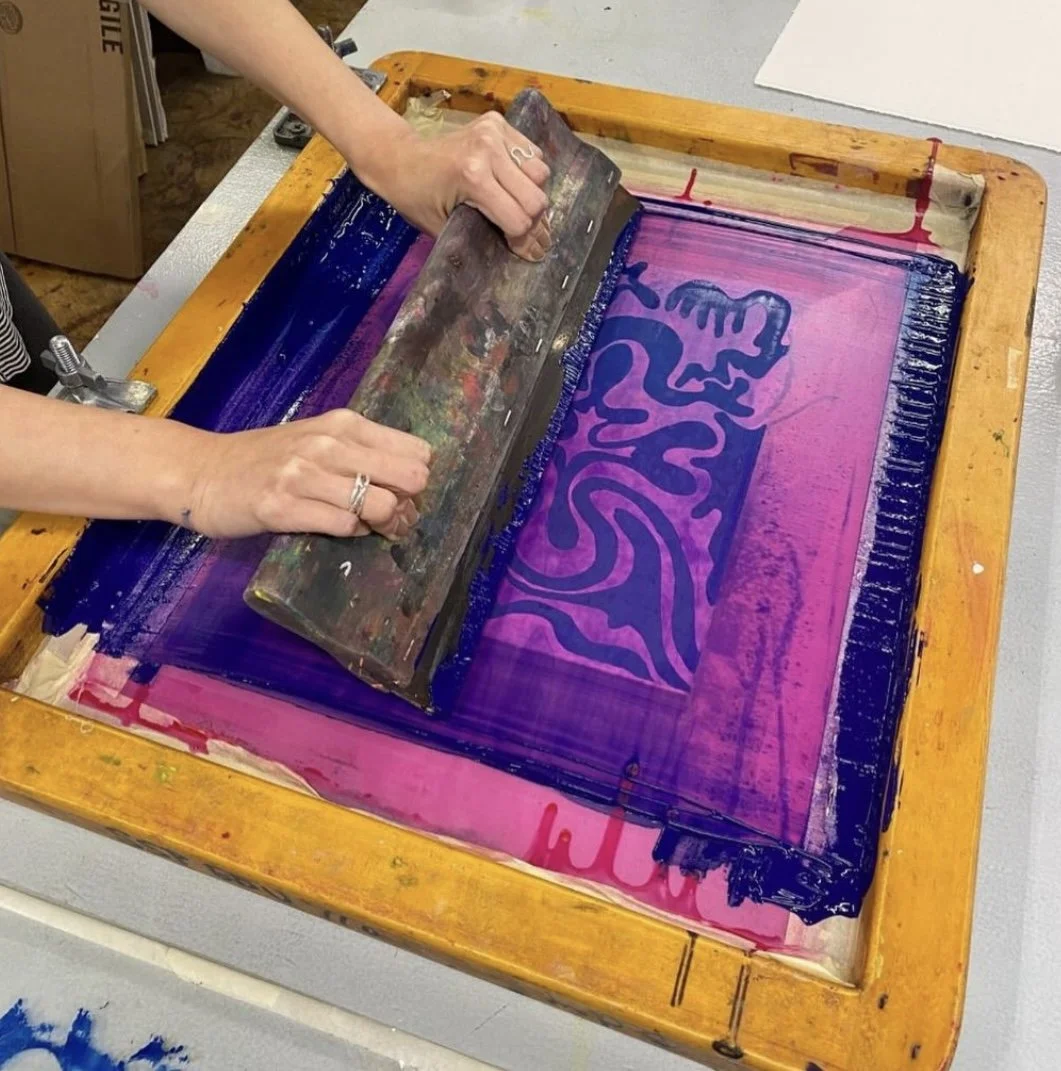ChatGPT said: The advantages of working with 10:9 Design Embroidery for branding
The Vital Guide to Understanding Screen Printing and Its Versatile Utilizes
Screen printing has a rich background that goes back to old times, advancing into an advanced strategy utilized across numerous industries today. This overview explores the ins and outs of the screen printing process, outlining its applications in home, advertising and marketing, and fashion style - 10:9 Design Company. Understanding these fundamentals can open creative possibility for both industrial and artistic jobs. The complying with areas will reveal important ideas and strategies to enhance one's screen printing ventures
The Background of Screen Printing
Although screen printing has roots that trace back centuries, its development shows the imaginative and technical advancements of different cultures. Coming from old China, the technique was initially utilized for enhancing textiles and later infect Japan, where it became essential to Ukiyo-e woodblock printing. The technique moved to Europe in the 18th century, where it got appeal amongst craftsmens and industrial printers. The invention of picture emulsion in the 20th century changed screen printing, enabling more intricate layouts and greater effectiveness. Musicians like Andy Warhol better moved its popularity, utilizing the medium to develop iconic works that mixed commercialism and great art. By the late 20th century, screen printing had actually established itself as a versatile strategy, utilized in vogue, advertising and marketing, and great art. Today, it remains to evolve, incorporating digital technology and expanding its applications throughout various sectors.
The Screen Printing Refine Explained
Screen printing transforms imaginative visions into substantial layouts through a series of specific steps. Originally, a photo is produced and then moved onto a screen, generally made of great mesh textile stretched over a frame. A light-sensitive emulsion is put on the screen, which is exposed to light, solidifying in areas not covered by the image. After rinsing the unhardened solution, a stencil is created.
Next, the screen is placed over the substrate, whether it be material, paper, or an additional material. Ink is then pressed via the open locations of the stencil making use of a squeegee, depositing the design onto the substrate listed below. This procedure can be duplicated for numerous shades, requiring different displays for each shade. Lastly, the published item is cured utilizing warmth to assure the ink sticks properly, resulting in a long lasting, vibrant design on-line.
Sorts Of Screen Printing Techniques

Additionally, specialized techniques, such as discharge screen printing, get rid of dye from the textile to produce softer prints, while aluminum foil screen printing uses metal foil to attain a shiny surface (10:9 Design Company). Each method provides unique attributes, satisfying numerous innovative demands and production scales, ultimately expanding the helpful site possibilities within the screen printing domain
Applications of Screen Printing in Various Industries

Furthermore, the signs and advertising fields utilize screen printing for producing eye-catching displays and banners. This technique permits bold colors and detailed designs that catch interest. In electronic devices, screen printing is employed for applying conductive inks to circuit card, essential for component connections. The home decoration sector welcomes screen printing to produce distinctive styles on textiles and wall surface art. Generally, screen printing works as an essential tool across diverse fields, enhancing products with customized and visually appealing graphics.
Tips for Successful Screen Printing Projects
While embarking on a screen printing job, cautious interest to information can substantially boost the final result. Selecting top quality materials is important; this includes the screen, inks, and substratums. Utilizing ideal mesh matters can influence ink deposition and detail resolution. Prep work is equally important; extensive cleansing of displays and correct direct exposure times ensure crisp prints.
Next off, exact enrollment is essential for multi-color prints. Making use of placement devices can assist achieve precise layering. In addition, screening prints on scrap materials prior to manufacturing assists identify potential concerns without losing resources.

Regularly Asked Inquiries
What Products Are Ideal for Screen Printing on Textile?
Cotton and polyester blends are ideal for screen printing on fabric because of their resilience and ink absorption. Furthermore, specialty fabrics like silk or canvas can create unique textures and coatings, boosting the overall design quality.
Just how Do I Tidy and Maintain Screen Printing Devices?
To preserve and clean screen printing equipment, one ought to frequently wash screens plastic sign printing with ideal solvents, evaluate mops for wear, lube moving components, and store all things in a completely dry, dust-free atmosphere to prolong their life expectancy.
What Are the Environmental Influences of Screen Printing?
Screen printing can have substantial environmental impacts, consisting of chemical waste from solvents and inks, water usage throughout cleansing procedures, and energy intake. Lasting practices and environmentally friendly materials are vital for reducing these adverse impacts.
Can Screen Printing Be Done at Home Effectively?
Screen printing can be properly done at home with the best materials and strategies. Enthusiasts can develop quality prints, though success depends on their skill degree, tools, and understanding of the process entailed.
What Are the Expenses Linked With Starting a Display Printing Business?

Starting a screen printing organization like it involves costs for devices, products, and workspace. Initial costs usually range from a few hundred to numerous thousand bucks, depending on the scale, high quality of machinery, and preferred manufacturing capability.
Screen printing has a rich background that dates back to old times, advancing right into a sophisticated technique utilized across different sectors today. An additional strategy, rotating screen printing, utilizes round displays, facilitating continuous printing on fabric rolls, thus enhancing effectiveness for large-scale manufacturings. In addition, specialized strategies, such as discharge screen printing, get rid of color from the material to produce softer prints, while aluminum foil screen printing uses metal aluminum foil to accomplish a shiny finish. In the fashion sector, screen printing is widely used to create vibrant designs on clothing, allowing brands to showcase their unique styles. Cotton and polyester blends are perfect for screen printing on fabric due to their sturdiness and ink absorption.